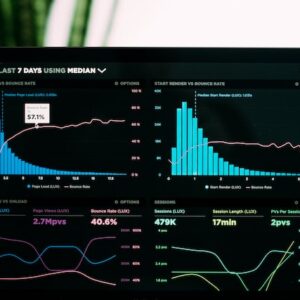Big Data Impact on the retail industry
When compared to other sectors, the retail sector faces the most intense competition. Companies in the retail sector strive to differentiate themselves by offering a variety of products and services in order to attract as many customers or consumers as possible.
Retailers are typically customer-focused, as evidenced by the dedication and enthusiasm with which employees in the retail industry interact with customers. Employees are trained to be attentive and polite, and they are encouraged to gain in-depth knowledge in order to better serve their customers’ needs. Customer feedback aids in the development of future marketing strategies and store operations, which have an impact on overall supply chain management.
The rise of Big Data in recent years has increased the efficiency of retailers while also increasing competition. Retailers are using Big Data analytics to understand what customers want and how they can meet those needs in order to stay ahead of the competition.
Big Data analytics in the retail sector enables businesses to create custom recommendations based on their purchase history, resulting in more personalized shopping experiences and better customer service. According to McKinsey, implementing Big Data Analytics in retail chains improves retail firms’ operating margins by around 60%.
An Overview of How Big Data is Revolutionizing the Retail Industry
Big Data is crucial in developing accurate sales strategies in the retail industry. Big Data is being used to understand customer behaviour, predict demand, and optimise pricing at every stage of the retail process. The retail industry is experiencing the following uses or benefits from Big Data Analytics:
Price reduction
Big Data analytics is assisting in the achievement of real-time pricing in order to adjust in-store prices for customers. Here, retailers attempt to analyse the effects of price changes on various products, which aids them in understanding the impact of prices on sales, customer purchasing decisions, product selection, and so on.
Big Data analytics assists retailers in estimating the optimal price, which increases sales and generates the most revenue.
Customizing the customer experience
Big Data presents opportunities for retailers to provide better customer experiences. For example, analysing customer data can assist in customising discounts/offers for targeted customers. This information could be related to purchase history, search history, average bill value, frequency of visits to retail stores, and so on. Big Data analytics can then be used to generate customised SMSs and emails related to offers/discounts.
Demand Prediction
Big Data is being used to extract value from data, such as through predictive analysis to anticipate purchasing trends, allowing businesses to differentiate themselves from the competition. These trends are concerned not only with the volume to be stored and the time, but also with changes in the target audience’s habits and preferences. Retail forecasting and retail projections are used to effectively allocate resources throughout the year.
Big Data is also playing an important role in determining when prices should be reduced, a process known as “markdown optimization,” which is supported by a predictive approach to determining the rise and fall of demand for a product or products.
According to the Mordor Intelligence market review, Big Data analytics in the retail market is expected to reach USD 13.26 billion by the end of 2026, growing at a CAGR of 21.20% during the forecast period (2021-26). The merchandising and supply chain analytics segment is expected to account for a sizable portion of Big Data analytics in the retail sector.
Summary-
Although there is a debate raging over the ethics of using personal data, the fact remains that not using it will cost the retailer heavily.

